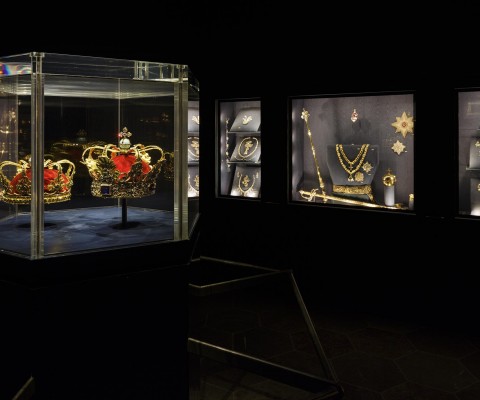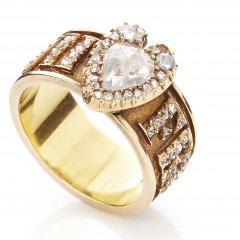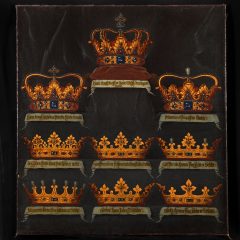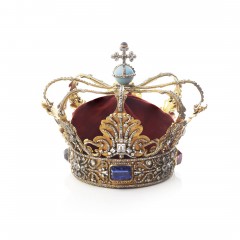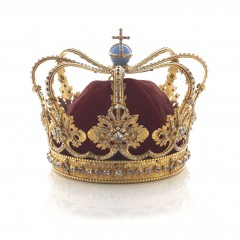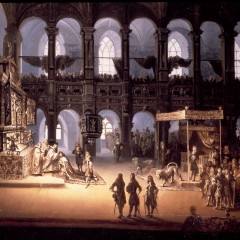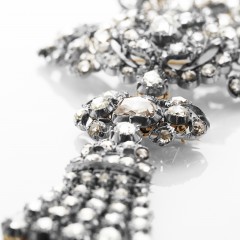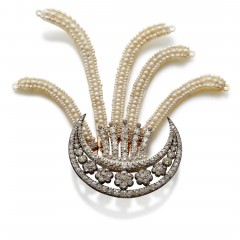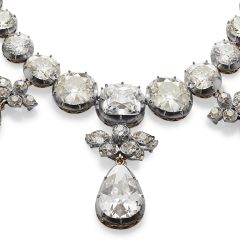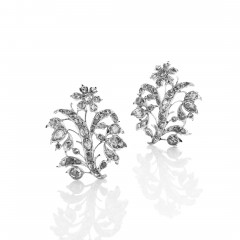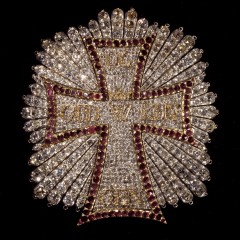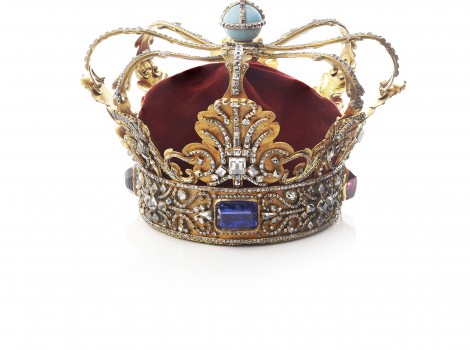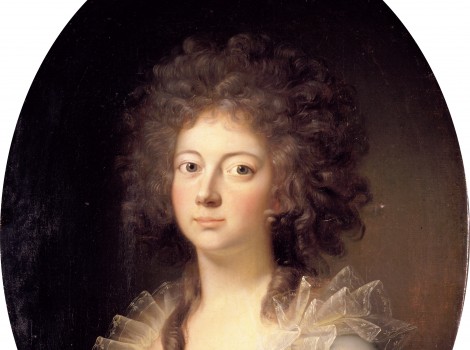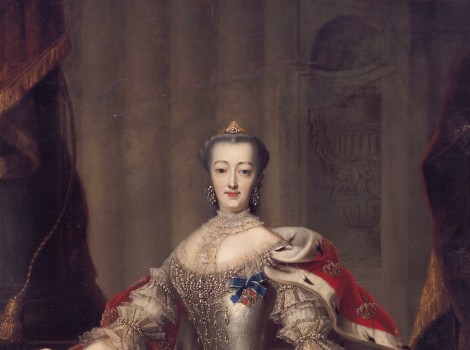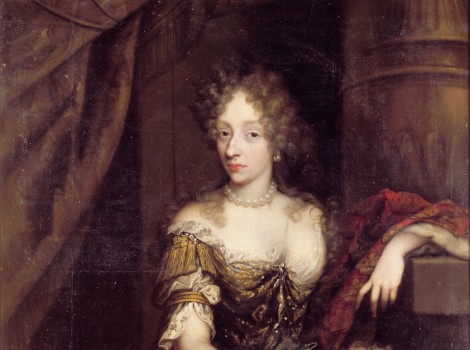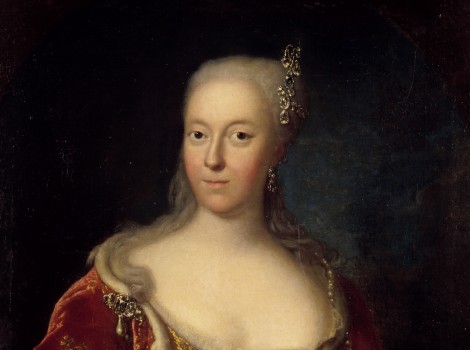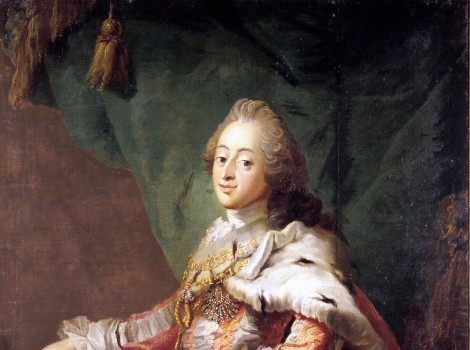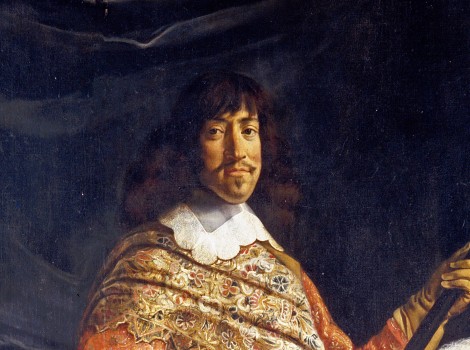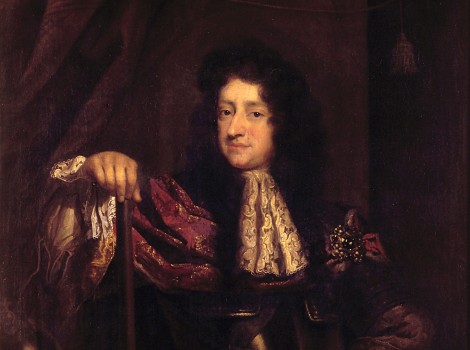I The Treasury
In the last section of the Treasury many of Rosenborg’s main attractions are on display, especially the Crown Jewels, the Crown Regalia, the Crown of the Absolutist Kings and the Queens’ Crown.
The collection of Crown Jewels for use by the reigning Queen was established with the will of Queen Sophie Magdalene in 1746 and subsequently enlarged through gifts from later queens and princesses. For the last coronation of the absolute monarchy in 1840, Queen Caroline Amalie had the main part of the Crown Jewels put together in four sets consisting of, for example, tiara, necklace, brooch and earrings.
The Crown Regalia in section 3 includes Sceptre, Orb, Anointing Rapier and Ampulla, all made in gold and jewels. Originally there were more Danish regalia, but some were sold by Christian II in 1523 and others by Christian IV in the 1620’s. The most important Regalia is the Crown of the Absolutist Kings. Unlike Christian IV’s old-fashioned open crown, this crown is closed. The large sapphire in front can be traced back to Frederik I.

 Dansk
Dansk
 English
English
 Deutsch
Deutsch



